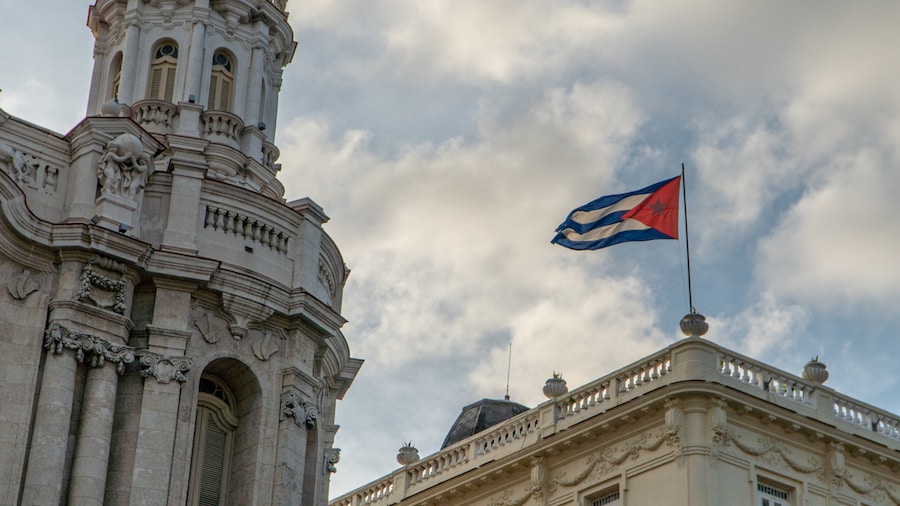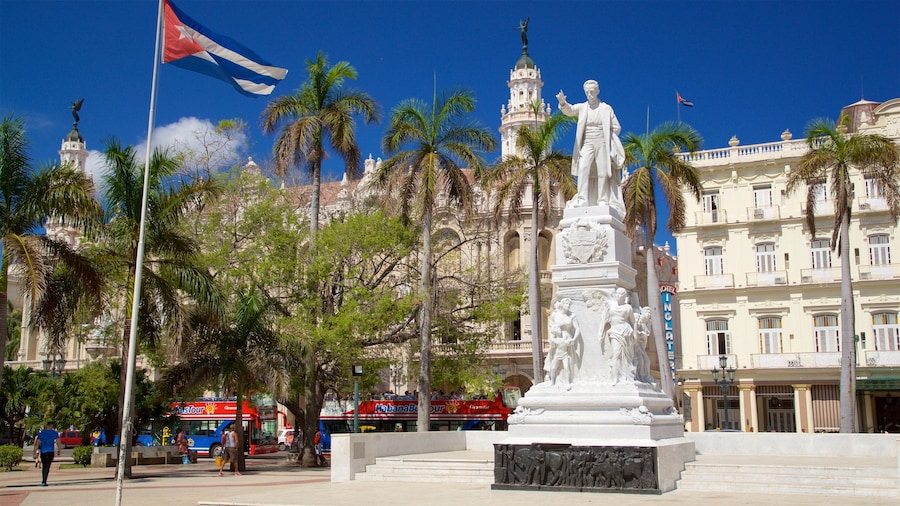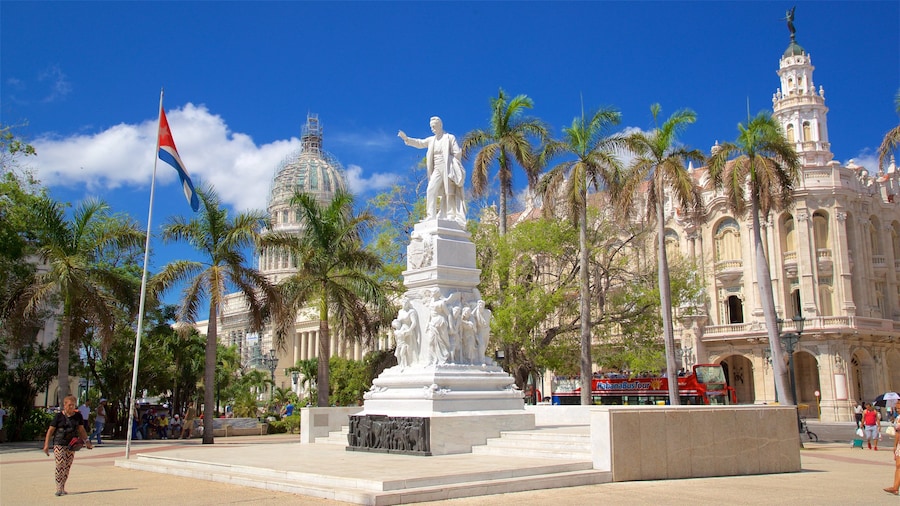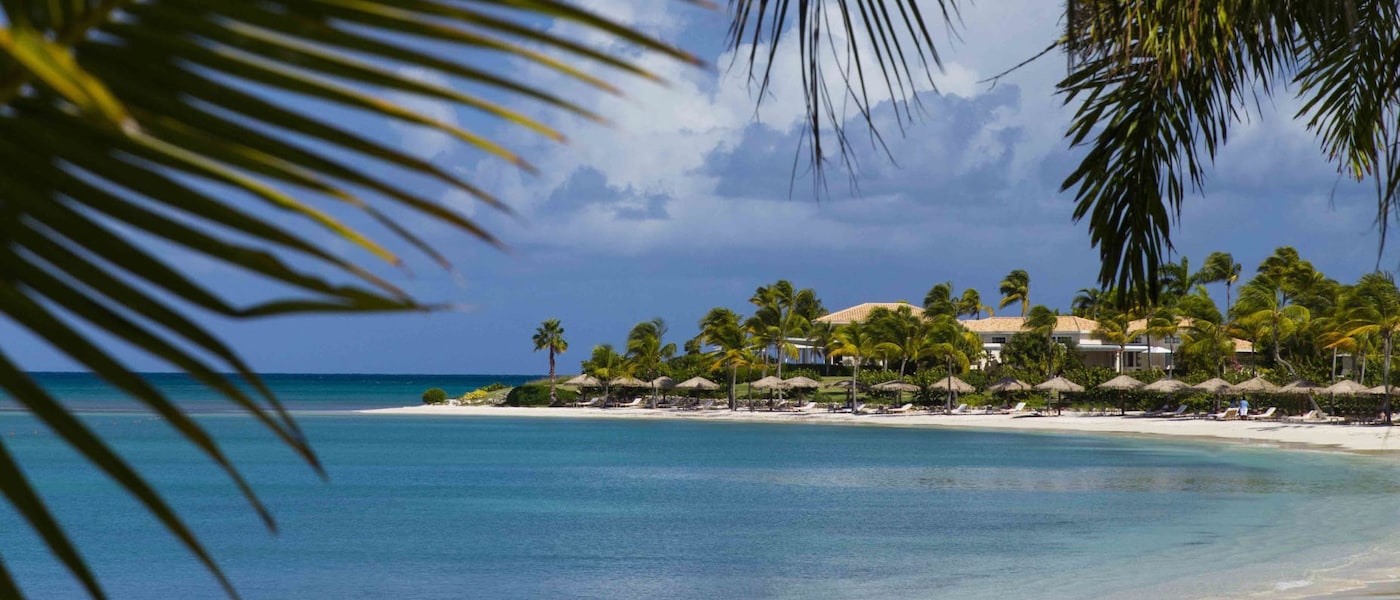El Capitolio (National Capitol Building) is a landmark Havana building and symbol of parliamentary power. Appreciate its beautiful architecture, which took over 3 years to complete and called upon the efforts of over 5,000 workers. Spot the work of acclaimed artists and retrace the footsteps of government officials and presidents.
Established in 1926, the El Capitolio was the seat of the Cuban government until 1959. Within its halls, laws were proposed, debated, agreed upon and passed. Now it houses the Cuban Academy of Sciences and the National Library of Science and Technology.
Take a moment to appreciate the striking façade. It features a grand staircase guarded by six 46-feet (14-meter) high Doric columns. On each side of the staircase is a bronze statue by the Italian sculptor Angelo Zanelli. On the left hand side is a male figure, El Trabajo (Work), and on the right is a women, La Virtud Tutelar (The Tutelary Virtue). Running either side of the entrance is an arcade fronted by rows of columns.
Look up at the cupola, which bears a striking resemblance to the dome of Washington’s United States Capitol. Crowning it is a copy of Giambologna’s 16th-century Mercury sculpture. Note the 24-carat diamond positioned in the cupola’s center. It serves as the starting point for measuring distances from Havana to all other Cuban cities, towns and villages.
Venture inside to the gleaming Hall of the Lost Steps, so-called for its extraordinary acoustics. Dominating the hall is Zanelli’s La Estatua de la Repúnblica (Statue of the Republic), one of the world’s tallest indoor statues. Spot Venetian mirrors in Salon Bolívar and Renaissance-style furnishings in the Salon Martí. Glimpse inside Salon Baire, a one-time conference room.
The building sits at the southern end of Paseo de Martí, in the neighborhood of Central Havana. Nearby attractions include the Gran Teatro de la Habana and the bustling Chinatown district.
El Capitolio is open daily and there’s an admission fee. Pay the extra fee to join a guided tour. Access to the interior may be restricted because of ongoing restoration work.

















